Music
Trailers
DailyVideos
India
Pakistan
Afghanistan
Bangladesh
Srilanka
Nepal
Thailand
StockMarket
Business
Technology
Startup
Trending Videos
Coupons
Football
Search
Download App in Playstore
Download App
Best Collections
Technology
The specter of constant surveillance hangs over all of us in ways we don&t even fully understand, but it is also possible to turn the tools of the watchers against them. Forensic Architecture is exhibiting several long-term projects at the Museum of Art and Design in Miami that use the omnipresence of technology as a way to expose crimes and violence by oppressive states.
Over seven years Eyal Weizman and his team have performed dozens of investigations into instances of state-sponsored violence, from drone strikes to police brutality. Often these events are minimized at all levels by the state actors involved, denied or no-commented until the media cycle moves on. But sometimes technology provides ways to prove a crime was committed and occasionally even cause the perpetrator to admit it — hoisted by their own electronic petard.
Sometimes this is actual state-deployed kit, like body cameras or public records, but it also uses private information co-opted by state authorities to track individuals, like digital metadata from messages and location services.
For instance, when Chicago police shot and killed Harith Augustus in 2018, the department released some footage of the incident, saying that it &speaks for itself.& But Forensic Architectureclose inspection of the body cam footage and cross reference with other materials makes it obvious that the police violated numerous rules (including in the operation of the body cams) in their interaction with him, escalating the situation and ultimately killing a man who by all indications — except the official account — was attempting to comply. It also helped additional footage see the light which was either mistakenly or deliberately left out of a FOIA release.
In another situation, a trio of Turkish migrants seeking asylum in Greece were shown, by analysis of their WhatsApp messages, images and location and time stamps, to have entered Greece and been detained by Greek authorities before being &pushed back& by unidentified masked escorts, having been afforded no legal recourse to asylum processes or the like. This is one example of several recently that appear to be private actors working in concert with the state to deprive people of their rights.
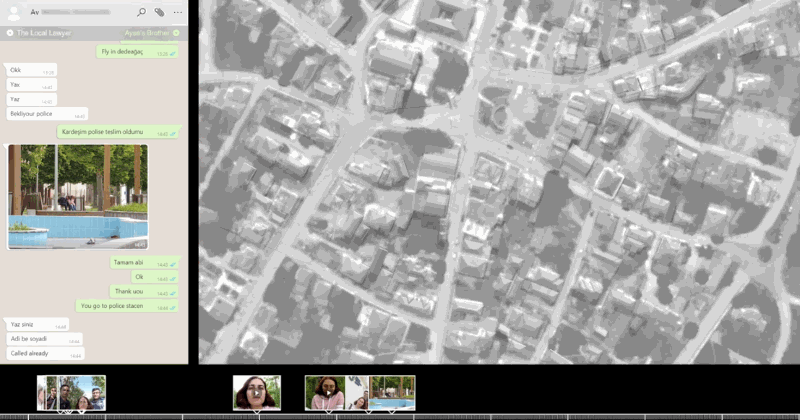
Situated testimony for survivors
I spoke with Weizman before the opening of this exhibition in Miami, where some of the latest investigations are being shown off. (Shortly after our interview he would be denied entry to the U.S. to attend the opening, with a border agent explaining that this denial was algorithmically determined; we&ll come back to this.)
The original motive for creating Forensic Architecture, he explained, was to elicit testimony from those who had experienced state violence.
&We started using this technique when in 2013 we met a drone survivor, a German woman who had survived a drone strike in Pakistan that killed several relatives of hers,& Weizman explained. &She has wanted to deliver testimony in a trial regarding the drone strike, but like many survivors her memory was affected by the trauma she has experienced. The memory of the event was scattered, it had lacunae and repetitions, as you often have with trauma. And her condition is like many who have to speak out in human rights work: The closer you get to the core of the testimony, the description of the event itself, the more it escapes you.&
The approach they took to help this woman, and later many others, jog her own memory, was something called &situated testimony.& Essentially it amounts to exposing the person to media from the experience, allowing them to &situate& themselves in that moment. This is not without its own risks.
&Of course you must have the appropriate trauma professionals present,& Weizman said. &We only bring people who are willing to participate and perform the experience of being again at the scene as it happened. Sometimes details that would not occur to someone to be important come out.&

A digital reconstruction of a drone strikeexplosion was recreated physically for another exhibition.
But itsurprising how effective it can be, he explained. One case exposed American involvement hitherto undisclosed.
&We were researching a Cameroon special forces detention center, torture and death in custody occurred, for Amnesty International,& he explained. &We asked detainees to describe to us simply what was outside the window. How many trees, or what else they could see.& Such testimony could help place their exact location and orientation in the building and lead to more evidence, such as cameras across the street facing that room.
&And sitting in a room based on a satellite image of the area, one told us: ‘yes, there were two trees, and one was over by the fence where the American soldiers were jogging.& We said, ‘wait, what, can you repeat that?& They had been interviewed many times and never mentioned American soldiers,& Weizman recalled. &When we heard there were American personnel, we found Facebook posts from service personnel who were there, and were able to force the transfer of prisoners there to another prison.&
Weizman noted that the organization only goes where help is requested, and does not pursue what might be called private injustices, as opposed to public.
&We require an invitation, to be invited into this by communities that invite state violence. We&re not a forensic agency, we&re a counter-forensic agency. We only investigate crimes by state authorities.&
Using virtual reality: &Unparalleled. Italmost tactile.&
In the latest of these investigations, being exhibited for the first time at MOAD, the team used virtual reality for the first time in their situated testimony work. While VR has proven to be somewhat less compelling than most would like on the entertainment front, it turns out to work quite well in this context.
&We worked with an Israeli whistleblower soldier regarding testimony of violence he committed against Palestinians,& Weizman said. &It has been denied by the Israeli prime minister and others, but we have been able to find Palestinian witnesses to that case, and put them in VR so we could cross reference them. We had victim and perpetrator testifying to the same crime in the same space, and their testimonies can be overlaid on each other.&
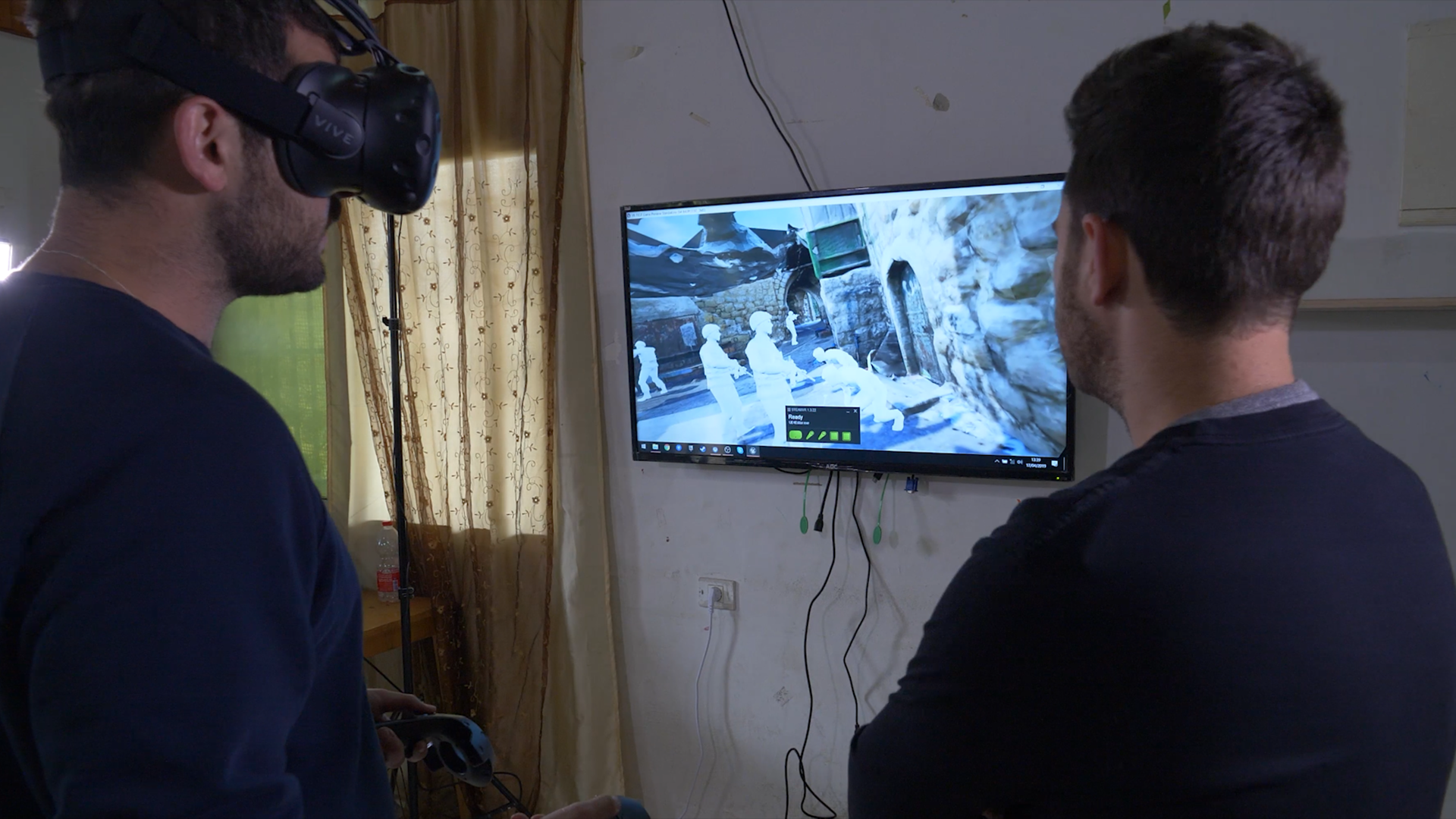
Dean Issacharoff — the soldier accused by Israel of giving false testimony — describes the moment he illegally beat a Palestinian civilian. (Caption and image courtesy of Forensic Architecture)
One thing about VR is that the sense of space is very real; if the environment is built accurately, things like sight-lines and positional audio can be extremely true to life. If someone says they saw the event occur here, but the state says it was here, and a camera this far away saw it at this angle… these incomplete accounts can be added together to form something more factual, and assembled into a virtual environment.
&That project is the first use of VR interviews we have done — itstill in a very experimental stage. But it didn&t involve fatalities, so the level of trauma was a bit more controlled,& Weizman explained. &We have learned that the level and precision we can arrive at in reconstructing an incident is unparalleled. Italmost tactile; you can walk through the space, you can see every object: guns, cars, civilians. And you can populate it until the witness is satisfied that this is what they experienced. I think this is a first, definitely in forensic terms, as far as uses of VR.&

A photogrammetry-based reconstruction of the area of Hebron where the incident took place.
In video of the situated testimony, you can see witnesses describing locations more exactly than they likely or even possibly could have without the virtual reconstruction. &I stood with the men at exactly that point,& says one, gesturing toward an object he recognized, then pointing upwards: &There were soldiers on the roof of this building, where the writing is.&
Of course it is not the digital recreation itself that forces the hand of those involved, but the incontrovertible facts it exposes. No one would ever have known that the U.S. had a presence at that detainment facility, and the country had no reason to say it did. The testimony wouldn&t even have been enough, except that it put the investigators onto a line of inquiry that produced data. And in the case of the Israeli whistleblower, the situated testimony defies official accounts that the organization he represented had lied about the incident.
Avoiding &product placement& and tech incursion
Sophie Landres, MOADcurator of Public Programs and Education, was eager to add that the museum is not hosting this exhibit as a way to highlight how wonderful technology is. Itimportant to put the technology and its uses in context rather than try to dazzle people with its capabilities. You may find yourself playing into someone elseagenda that way.
&For museum audiences, this might be one of their first encounters with VR deployed in this way. The companies that manufacture these technologies know that people will have their first experiences with this tech in a cultural or entertainment contrast, and they&re looking for us to put a friendly face on these technologies that have been created to enable war and surveillance capitalism,& she told me. &But we&re not interested in having our museum be a showcase for product placement without having a serious conversation about it. Ita place where artists embrace new technologies, but also where they can turn it towards existing power structures.&
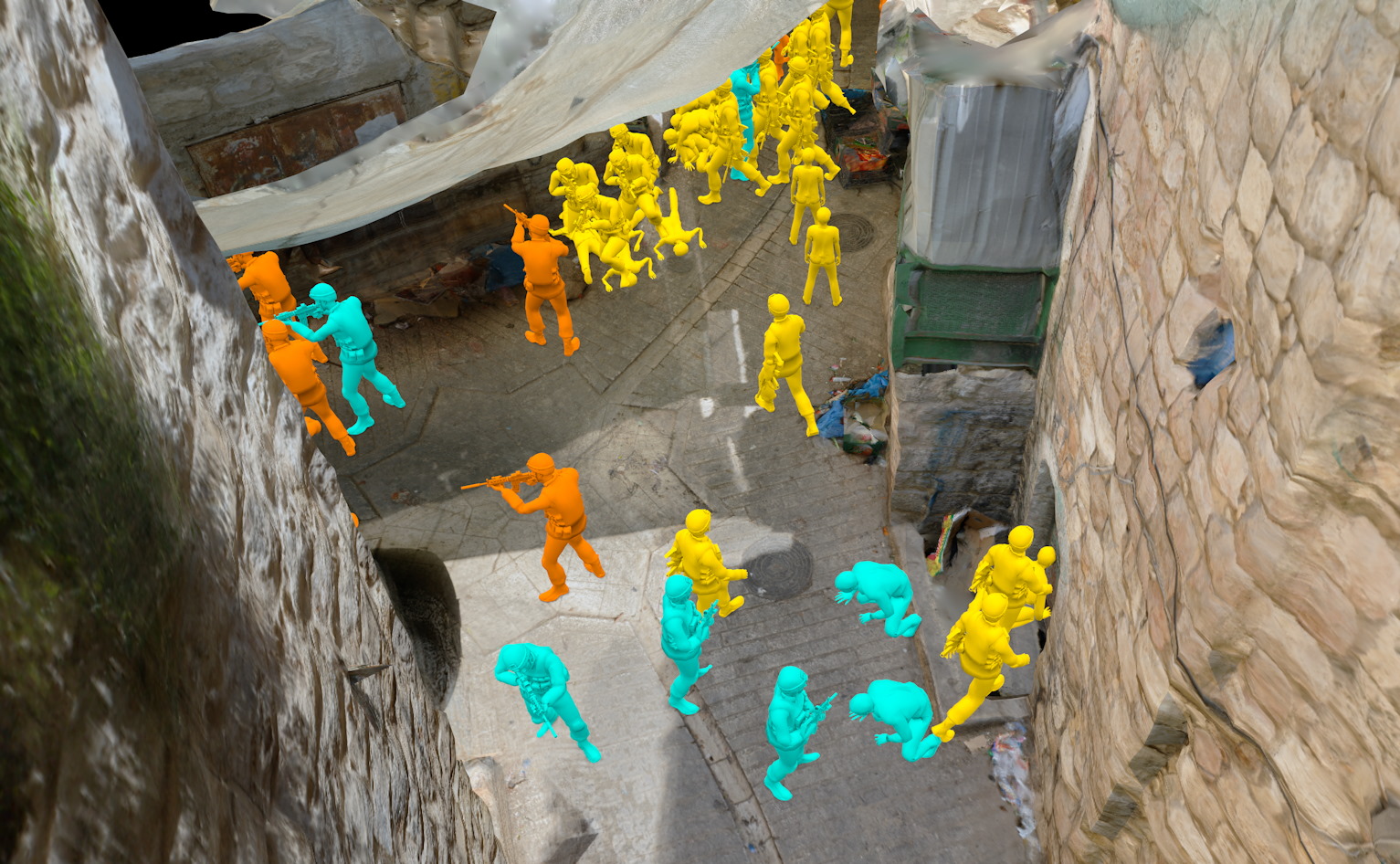
Boots on backs mean this not an advertisement for VR headsets or 3D modeling tools.
She cited a tongue-in-cheek definition of &mixed reality& referring to both digital crossover into the real world and the deliberate obfuscation of the truth at a greater scale.
&On the one hand you have mixing the digital world and the real, and on the other you have the mixed reality of the media environment, where thereno agreement on reality and all these misinformation campaigns. Whatimportant about Forensic Architecture is they&re not just presenting evidence of the facts, but also the process used to arrive at these truth claims, and thatextremely important.&
In openly presenting the means as well as the ends, Weizman and his team avoid succumbing to what he calls the &dark epistemology& of the present post-truth era.
&The arbitrary logic of the border&
As mentioned earlier, Weizman was denied entry to the U.S. for reasons unknown, but possibly related to the network of politically active people with whom he has associated for the sake of his work. Disturbingly, his wife and children were also stopped while entering the states a day before him and separated at the airport for questioning.
In a statement issued publicly afterwards, Weizman dissected the event.
In my interview the officer informed me that my authorization to travel had been revoked because the &algorithm& had identified a security threat. He said he did not know what had triggered the algorithm but suggested that it could be something I was involved in, people I am or was in contact with, places to which I had traveled… I was asked to supply the Embassy with additional information, including fifteen years of travel history, in particular where I had gone and who had paid for it. The officer said that Homeland Securityinvestigators could assess my case more promptly if I supplied the names of anyone in my network whom I believed might have triggered the algorithm. I declined to provide this information.
This much we know: we are being electronically monitored for a set of connections & the network of associations, people, places, calls, and transactions & that make up our lives. Such network analysis poses many problems, some of which are well known. Working in human rights means being in contact with vulnerable communities, activists and experts, and being entrusted with sensitive information. These networks are the lifeline of any investigative work. I am alarmed that relations among our colleagues, stakeholders, and staff are being targeted by the US government as security threats.
This incident exemplifies & albeit in a far less intense manner and at a much less drastic scale & critical aspects of the &arbitrary logic of the border& that our exhibition seeks to expose. The racialized violations of the rights of migrants at the US southern border are of course much more serious and brutal than the procedural difficulties a UK national may experience, and these migrants have very limited avenues for accountability when contesting the violence of the US border.
The works being exhibited, he said, &seek to demonstrate that we can invert the forensic gaze and turn it against the actors — police, militaries, secret services, border agencies — that usually seek to monopolize information. But in employing the counter-forensic gaze one is also exposed to higher-level monitoring by the very state agencies investigated.&
Forensic Architectureinvestigations are ongoing; you can keep up with them at the organizationwebsite. And if you&re in Miami, drop by MOAD to see some of the work firsthand.
- Details
- Category: Technology Today
Jordi Greenham, the co-founder and CEO of Mexican long-term rentals startup Homie, has resigned after a sexual harassment investigation was carried out by the companyethics board.
On February 14, Homie launched an investigation into allegations of sexual harassment against Greenham, according to a corporate Facebook post. The message followed reports of sexual harassment that were posted to Facebook earlier the same day. In them, a woman, who has asked to remain anonymous to protect her privacy, claimed that CEO Greenham propositioned her in a WhatsApp message around 1:30 a.m. on February 14 to spend the night with him in exchange for 3,000 pesos (about $150 USD).
Below is a screenshot of her Facebook post, which translates to English as:
Today, Jordi Greenham Asensio, co-founder of Homie offered me money to spend the night with him. It should be noted that we do not have a personal connection and that he contacted me on LinkedIn a few months ago to offer me a job at his company, we communicated through WhatsApp to schedule the interviews and for his team to communicate with me. I carried out the process and I did not get the position and there, that is the extension of the &relationship&.
It is not correct that someone, in this case a man, thinks that it is acceptable to make these types of solicitations. It makes me angry that I delayed in saying something about this in thinking that there are no consequences for these types of actions. Attached evidence of the conversation.

The WhatsApp exchange can be translated to English here:
Homie CEO Greenham:
Hi
I would like to see you
Recipient:
Can you explain to me the random texts at strange hours?
Homie CEO Greenham:
No, there is no rational explanation.
It was irrational. But I understand that it doesn&t interest you
How much could I pay you for one night?
3,000?
The woman tells TechCrunch that she met Greenham once through a mutual friend five years ago but had no contact with him since that initial introduction until he reached out to her on LinkedIn in September 2019. She told TechCrunch she had been interested in a role at the fast-growing startup, and communicated with Greenham over WhatsApp to arrange interviews and discuss the position. Ultimately, after interviewing for the role, she says she never heard back from the company.
TechCrunch reached out to both Greenham and Homie on February 21. Homie responded to TechCrunchrequest for comment on the 23rd with this statement:
On the 14th of February, the Homie Board of Directors was informed of the unacceptable behavior of the CEO and took immediate action. The BoardEthics Committee carried out the necessary investigation and on the 16th of February, after having discussed it internally, Jordi Greenham Asensio resigned as CEO and President of the company. The fast and unwavering action of the Board reflects our commitment for the highest standard of conduct, in all levels of the organization. The opinions and comments of Jordi Greenham no longer represent that of Homie.
HomieFebruary 14 Facebook post detailed that its code of ethics deems harassment, discrimination and gender violence to be unacceptable and that those standards apply to &all levels of the organization.&
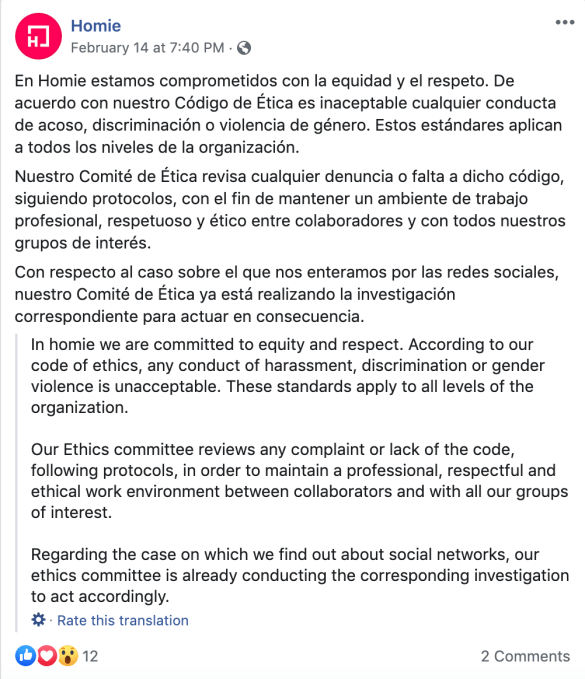
Homie, which has raised $8.2 million, is currently active in more than 100 Mexican cities. According to Crunchbase, the company employs between 100-250 people. Homie recently raised a $7 million Series A round in December 2019 led by Equity International, a fund founded by American billionaire Sam Zell.
- Details
- Category: Technology Today
Read more: Homie CEO resigns after allegations of sexual harassment from job applicant
Write comment (95 Comments)Boris Renski, the co-founder of Mirantis, one of the earliest and best-funded players in the OpenStack space a few years ago (which then mostly pivoted to Kubernetes and DevOps), has left his role as CMO to focus his efforts on a new startup: FreedomFi. The new company brings together open-source hardware and software to give enterprises a new way to leverage the newly opened 3.5 GHz band for private LTE and — later — 5G IoT deployments.
&There is a very broad opportunity for any enterprise building IoT solutions, which completely changes the dynamic of the whole market,& Renski told me when I asked him why he was leaving Mirantis. &This makes the whole space very interesting and fast-evolving. I felt that my background in open source and my existing understanding of the open-source landscape and the LTE space […] is an extremely compelling opportunity to dive into headfirst.&

Renski told me that a lot of the work the company is doing is still in its early stages, but the company recently hit a milestone when it used its prototype stack to send messages across its private network over a distance of around 2.7 miles.
Mirantis itself worked on bringing Magma, a Facebook-developed open-source tool for powering some of the features needed for building access networks, into production. FreedomFi is also working with the OpenAirInterface consortium, which aims to create an ecosystem for open-source software and hardware development around wireless innovation. Most, if not all, of the technology the company will develop over time will also be open source, as well.
Renski, of course, gets to leverage his existing connections in the enterprise and telco industry with this new venture, but he also told me that he plans to leverage the Mirantis playbook as he builds out the company.
&At Mirantis, our journey was that we started with basically offering end-to-end open-source cloud buildouts to a variety of enterprises back when OpenStack was essentially the only open-source cloud project out there,& he explained. &And we spent a whole bunch of time doing that, engaging with customers, getting customer revenue, learning where the bottlenecks are — and then kind of gradually evolving into more of a leveraged business model with a subscription offering around OpenStack and then MCP and now Kubernetes, Docker, etc. But the key was to be very kind of customer-centric, go get some customer wins first, give customers a services-centric offering that gets them to the result, and then figure out where the leveraged business model opportunities are.&
Currently, enterprises that want to attempt to build their own private LTE networks — and are willing to spend millions on it — have to go to the large telecom providers. Those companies, though, aren&t necessarily interested in working on these relatively small deployments (or at least &small& by the standards of a telco).
Renski and his team started the project about two months ago and for now, it remains self-funded. But the company already has five pilots lined up, including one with a company that produces large-scale events and another with a large real estate owner, and with some of the tech falling in place, Renski seems optimistic that this is a project worth focusing on. There are still some hurdles to overcome and Renski tells me the team is learning new things every day. The hardware, for example, remains hard to source and the software stack remains in flux. &We&re probably at least six months away from having solved all of the technology and business-related problems pertaining to delivering this kind of end-to-end private LTE network,& he said.
- Details
- Category: Technology Today
Read more: Mirantis co-founder launches FreedomFi to bring private LTE networks to enterprises
Write comment (93 Comments)MWC may have been canceled on account of rising coronavirus concerns, but the party still went on for Huawei (albeit to what appears to have been a mostly empty room). A year after wowing crowds with the Mate X, the company is introducing the Mate Xs.
Rather than a proper successor, the device appears to be the result of Huaweidecision to go back to the drawing board, following Samsungvery public problems with its own original foldable.

The design looks nearly identical to the original version of the phone — which is a pro. Honestly, the one major downside of the device (aside from a lofty price tag) is the fact that it never fully arrived, outside of what appears to be a relatively small batch offering in China.
Like Samsung, Huaweiupdate focused a lot on the hinge; with increased mechanical components, the product should be more rugged than the original. Keep in mind that, while we were able to play around with the original Mate X, that was about it. Personally, I saw one at MWC and had an opportunity to try one for a few minutes during lunch, between meetings at Huawei HQ in Shenzhen.

Now that foldables have arrived, it seems Huawei is finally ready to take the leap. Of course, one ought not forget the companyongoing issues here in the States that will not only make it more difficult to procure here, but also blocks access to Android apps and services. That will continue to be a major issue for the companyproducts, going forward.
Price, too, will continue to be an issue, at around $2,700 when it goes up for sale in certain markets next month. That extremely inflated price gets you a 6.6-inch display, 5G, a beefy 4,500 mAh battery, the latest Kirin 990 chip, 8GB of RAM and 512GB of storage. Go big and/or go home, right?
- Details
- Category: Technology Today
Read more: Huawei’s ill-fated foldable returns with a more robust upgrade
Write comment (96 Comments)Allowance is going digital. Venmo has been spotted prototyping a new feature that would allow adult users to create for their teenage children a debit card connected to their account. That could potentially let parents set spending notifications and limits while giving kids more flexibility in urgent situations than a few dollars stuffed in a pocket.
Delving into childrenbanking could establish a new reason for adults to sign up for Venmo, get them saving more in Venmo debit accounts where the company can earn interest on the cash and drive purchase frequency that racks up interchange fees for Venmoowner PayPal .

But Venmo is arriving late to the teen debit card market. Startups like Greenlight and Step let parents manage teen spending on dedicated debit cards. More companies like Kard and neo banking giant Revolut have announced plans to launch their own versions. And Venmoprototype uses very similar terminology to that of Current, a frontrunner in the childrenbanking space with over 500,000 accounts that raised a $20 million Series B late last year.
The first signs of Venmodebit card were spotted by reverse engineering specialist Jane Manchun Wong, who has provided slews of accurate tips to TechCrunch in the past. Hidden in VenmoAndroid app is code revealing a &delegate card& feature, designed to let users create a debit card thatconnected to their account but has limited privileges.

A screenshot generated from hidden code in Venmoapp, via Jane Manchun Wong
A set-up screen Wong was able to generate from the code shows the option to &Enter your teeninfo,& because &We&ll use this to set up the debit card.& It asks parents to enter their childname, birth date and &What does your teen call you?& Thatalmost identical to the &What does [your childname] call you?& set-up screen for Currentteen debit card.
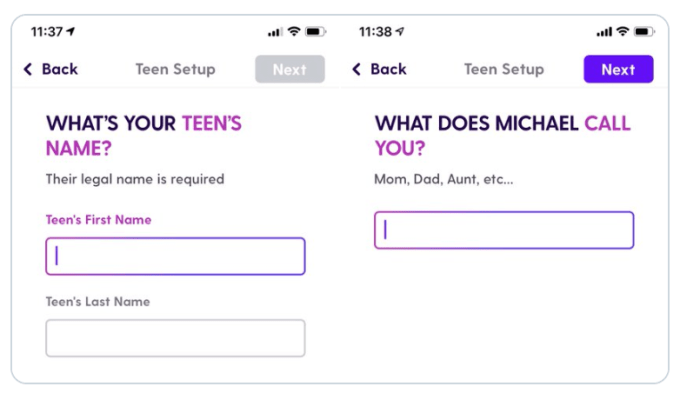
When TechCrunch asked about the teen debit feature and when it might launch, a Venmo spokesperson gave a cagey response that implies itindeed internally testing the option, writing &Venmo is constantly working to identify ways to refine and enhance the user experience. We frequently test product offerings to understand the value it could have for our users, and I don&t have anything further to share right now.&
Typically, the tech company product development flow sees them come up with ideas, mock them up, prototype them in their real apps as internal-only features, test them externally with small percentages of real users, then launch them officially if feedback and data is positive throughout. Itunclear when Venmo might launch teen debit cards, though the product could always be scrapped. It&d need to move fast to beat Revolut and Kard to market.

Current teen debit card
The launch would build upon the June 2018 launch of Venmobranded Mastercard debit card thatmonetized through interchange fees and interest on savings. It offers payment receipts with options to split charges with friends within Venmo, free withdrawls at MoneyPass ATMs, rewards and in-app features for reseting your PIN or disabling a stolen card. Venmo also plans to launch a credit card issued by Synchrony this year.
Venmo might look to equip its teen debit card with popular features from competitors, like automatic weekly allowance deposits, notifications of all purchases or the ability to block spending at certain merchants. Itunclear if it will charge a fee like the $36 per year subscription for Current.

Current offers these features for parents who set up a teen debit card
Tech startups are increasingly pushing to offer a broad range of financial services where margins are high. Itan easy way to earn cheap money at a time when unit economics are coming under scrutiny in the wake of the WeWork implosion. Investors are pinning their hopes on efficient financial services too, pouring $34 billion into fintech startups during 2019.
Venmoalready become a popular way for younger people to split the bill for Uber rides or dinner. Bringing social banking to a teen demographic probably should have been its plan all along.
- Details
- Category: Technology Today
Read more: Venmo prototypes a debit card for teenagers
Write comment (94 Comments)Max Q is a new weekly newsletter all about space. Sign up here to receive it weekly on Sundays in your inbox.
Busy week for SpaceX — across funding, space tourism and next-gen spacecraft. Therealso a space station resupply mission coming up that itgetting ready for, and signs (this time literally) continue to suggest that its first human spaceflight mission is imminent.
Lots of other news, too, including our own: We announced this week that NASA Administrator Jim Bridenstine is going to be our guest onstage at TC Sessions: Space coming up in June.
Farewell to a legend
Katherine Johnson, a mathematician who defied prejudice in the &50s and &60s to help NASA send the first men to the moon, has died at the age of 101. She was a pioneer, a role model and an instrumental part of Americaspace program, and she will be dearly missed.
SpaceX plans to build Starships at a furious clip
 SpaceX is serious about iteration — its strategy of building (and failing — and learning from its failures) fast is in full effect for its Starship development program. Elon Musk said on Twitter this week that the plan is to build them as frequently as possible with significant improvements between each successive spacecraft, with the aim of going through two or three iterations before flying an orbital mission later this year.
SpaceX is serious about iteration — its strategy of building (and failing — and learning from its failures) fast is in full effect for its Starship development program. Elon Musk said on Twitter this week that the plan is to build them as frequently as possible with significant improvements between each successive spacecraft, with the aim of going through two or three iterations before flying an orbital mission later this year.
SpaceX seeking $250 million in new funding
The still-private SpaceX is going back to investors for more cash, likely to help it with the expensive proposition of building a bunch of Starships in rapid succession essentially by hand. Itsaid to be seeking $250 million in a round that could close as early as mid-March, according to a CNBC report.
SpaceX finds an experienced partner for Crew Dragon space tourism
 One side of SpaceXbusiness that isn&t necessarily as obvious as its commercial cargo launch services is the space tourism angle. This week, the company announced a partnership with Space Adventures, the same firm that has arranged paid trips to the Space Station for private citizens aboard Soyuz capsules. The first of these trips, which won&t go to the ISS but instead will fly up to a higher orbit, take a trip around Earth and come back, is set to take off as early as next year. And if you have to ask about the price, you probably can&t afford it.
One side of SpaceXbusiness that isn&t necessarily as obvious as its commercial cargo launch services is the space tourism angle. This week, the company announced a partnership with Space Adventures, the same firm that has arranged paid trips to the Space Station for private citizens aboard Soyuz capsules. The first of these trips, which won&t go to the ISS but instead will fly up to a higher orbit, take a trip around Earth and come back, is set to take off as early as next year. And if you have to ask about the price, you probably can&t afford it.
New platform headed to the ISS in March
The ISS gets a new platform next month that can support attached payloads — up to a dozen — from research partners, including academic institutions and private companies. It&ll go up aboard SpaceXnext resupply mission for the station, which is currently targeting liftoff on March 2. Also, Adidas is sending up a machine that makes its BOOST shoe soles, just to see how it works in space.
Japan is going to get and return a soil sample from a Mars moon
 Japan is sending a mission to Phobos and Deimos to study the two moons of Mars, using a probe that will orbit the Red Planetnatural satellites loaded with sensors. It&ll also carry a small lander, that will itself deploy an even smaller rover, which will study the surface of Phobos directly. If all goes to plan, it&ll collect a sample and bring that back to Earth for further study here.
Japan is sending a mission to Phobos and Deimos to study the two moons of Mars, using a probe that will orbit the Red Planetnatural satellites loaded with sensors. It&ll also carry a small lander, that will itself deploy an even smaller rover, which will study the surface of Phobos directly. If all goes to plan, it&ll collect a sample and bring that back to Earth for further study here.
SpaceX talent is fueling the LA startup ecosystem
It turns out that SpaceX, not Snap, may be the most important young technology company for developing the Los Angeles startup ecosystem. Jon Shieber documents how SpaceX alum have gone forth and built a number of companies in the area that have gone on to raise big cash, as well as very young startups that have had a promising beginning. Extra Crunch subscription required.
Meanwhile, in Canada
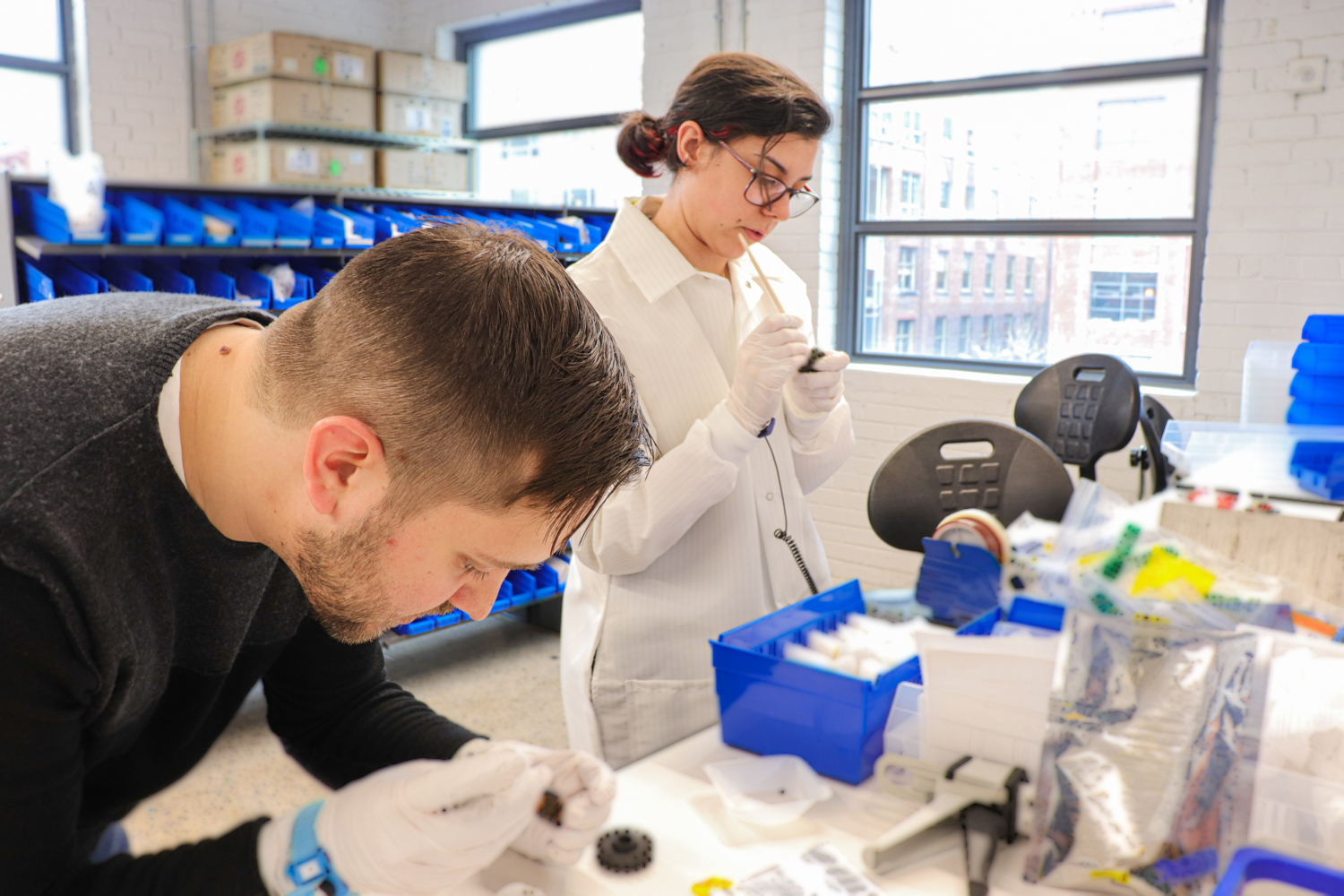 Yes, LA has a bustling space tech ecosystem. But communications satellite startup Kepler calls Canada home, and it recently made the interesting decision to build its small satellites in-house — in its own facility in downtown Toronto. Founder and CEO Mina Mitry tells me why thatthe best choice for his company. Extra Crunch subscription required.
Yes, LA has a bustling space tech ecosystem. But communications satellite startup Kepler calls Canada home, and it recently made the interesting decision to build its small satellites in-house — in its own facility in downtown Toronto. Founder and CEO Mina Mitry tells me why thatthe best choice for his company. Extra Crunch subscription required.
- Details
- Category: Technology Today
Read more: Max Q: How to build a Starship
Write comment (90 Comments)Page 1366 of 1408

 8
8





